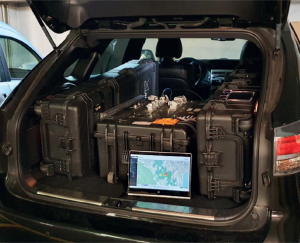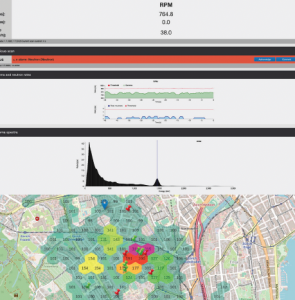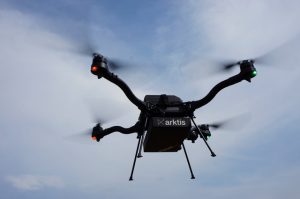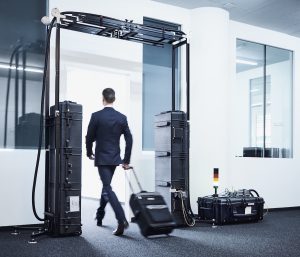Arktis MODES Kit- Mobile Rad/ Nuc Detection System
| Company | Arktis Radiation Detectors Ltd |
|---|
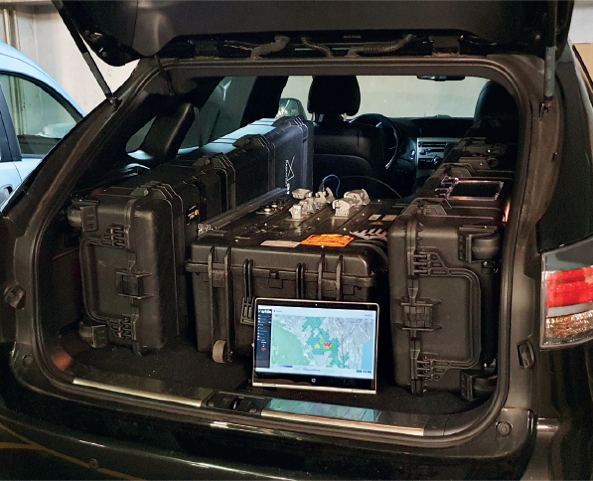
Images
The MODES Kit enables the conversion of ordinary vehicles into mobile radiation detection systems within minutes. The system can be used to perform radiation mapping, search for lost or stolen radioactive sources, and monitor traffic for radiological threats. The system can equally be dismounted from the vehicle to serve as a standalone radiation monitor. The system is complemented by a fully interoperable, drone-based detector for mapping, search, and closer inspection. The Arktis MODES kit is designed to detect and identify radiological threats. The system can work either deployed in vehicles or as stand-alone static monitor.
- The internal CPU manages real time ambient spectrum acquisition, computes ambient dose rates, and updates the system’s alarm parameters.
- The acquired spectra are analyzed and compared against a library to identify radioisotopes and potential threats.
- The browser-based user interface does not require a specific operating system or screen size.
- The system can be deployed in a variety of measurement modes both static and dynamic.
- The mapping mode enables automatic and direct measurement reporting on a dynamic and interactive map.
| Specifications | |||||
| Configuration | 1 electronics box with up to 8 detectors in any configuration, augmented by drone-based Flat Panel Gamma (FPG) detector (optional) | ||||
| Detector options | 2-liter NaI(Tl) scintillator
Energy range from 30 keV to 3000 keV. |
4-liter NaI(Tl) scintillator
Energy range from 30 keV to 3000 keV. |
10-liter PVT plastic scintillator
Energy range from 30 keV to 3000 keV. |
Arktis M800 neutron detector | |
| Read-out electronics | Integrated MCA (fast multichannel analyzer). | Integrated signal processing unit | |||
| Detection sensitivity when deployed as single sided pedestrian RPM | ANSI N42.38-2015 compliant | ANSI N42.38-2015 compliant | ANSI N42.35-2016 compliant | ANSI N42.35-2016 compliant | |
| This sensitivity is guaranteed for sources at 1m distance from detector’s face moving at 1.2 m/s. | |||||
| Detection sensitivity when deployed in a vehicle | Analogous sensitivity as above for sources at 1m distance passed at 1.2 m/s. The declared sensitivities do not account for attenuation by the vehicle’s structure. We recommend installing the detectors adjacent to windows to minimize shielding by the vehicle | ||||
| Connectivity |
Ethernet Wi-Fi for local communication (optional) 4G (Optional. SIM card not provided.)
|
||||
| Battery | The system can be equipped with a built-in battery, capable of powering the system for up to 15h | ||||
| Ingress protection | IP54 | ||||
| Power supply | 12VDC | ||||
| Operating temperature | -30 to +50 °C. Relative humidity: up to 98 %, non-condensing. | ||||
| Data output | Conform to ANSI N42.42, TSA protocol, PDF report for each alarm and occupancy.
Provides gamma count rates, neutron count rates and background count rates to GUI, Arktis CAS software or 3rd party user interfaces. Flexible software architecture allows simple integration into existing infrastructure. Alarm status and categorization or identification is offered for selected detectors. The system can be operated remotely or locally. |
||||
| Available peripherals (optional) | LIDAR occupancy sensor; color cameras controlled by the GUI; software for centralized data supervision workspace; Alarm beacon with visual and acoustic indicators; rugged laptop (ethernet, Wi-Fi) or tablet (Wi-Fi only) | ||||

